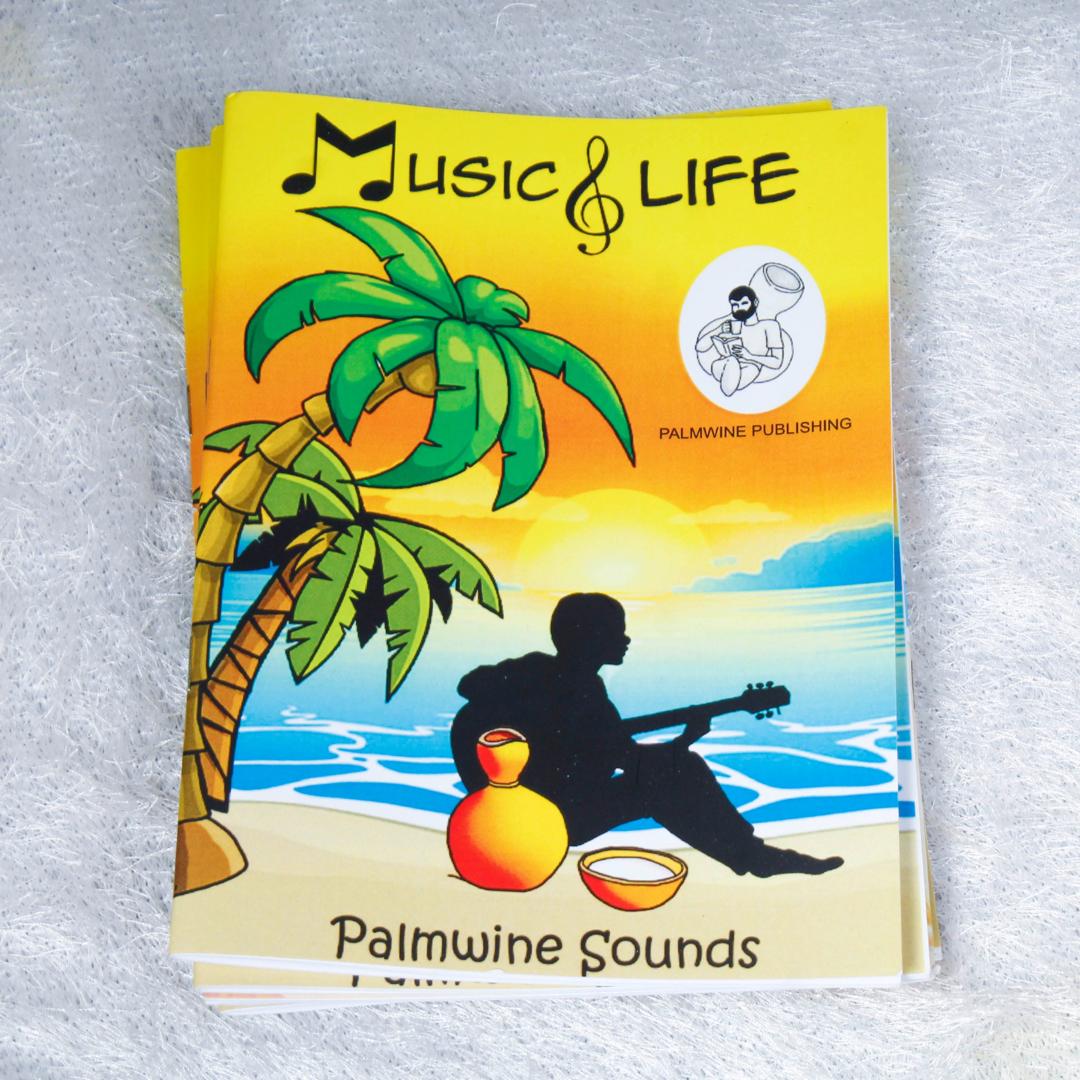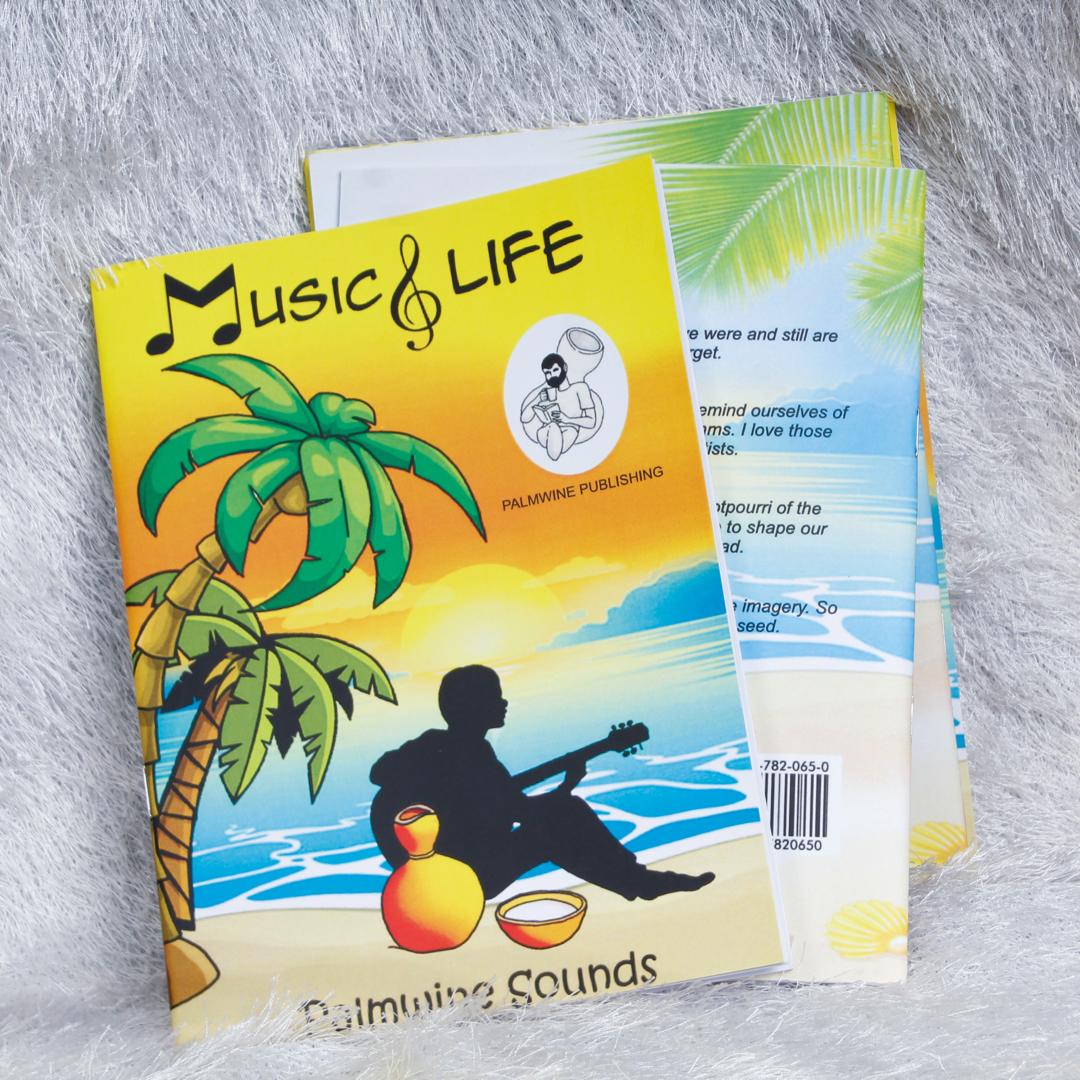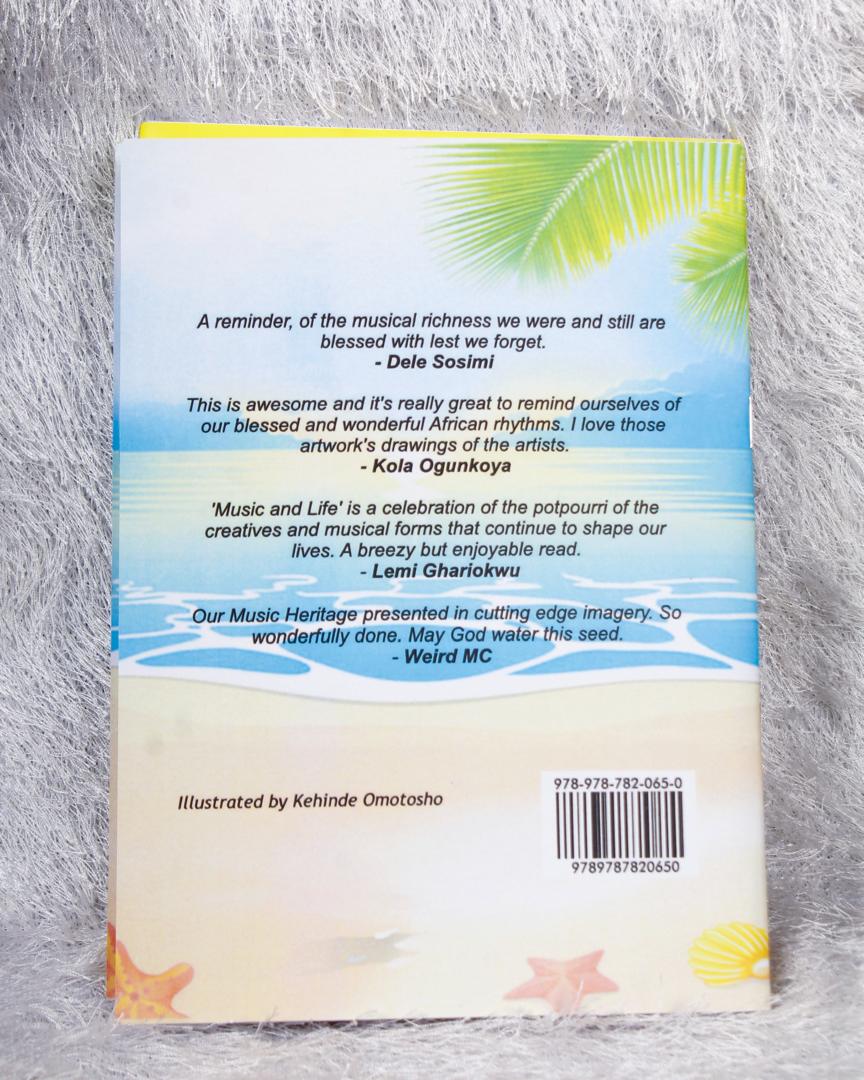Music and Life – A Poetic Journey of Nigerian Music History
Nigerian music is a vibrant fusion of ancient traditions, cultural exchange, political movements, and modern creativity. It encompasses a broad spectrum of sounds and styles, ranging from indigenous music to contemporary global hits. Much like the tapestry of Nigerian history, the music mirrors the country’s struggles, triumphs, and evolving identity. In tracing the history of […]

music and life a poetic journey of nigerian music history (3)
Nigerian music is a vibrant fusion of ancient traditions, cultural exchange, political movements, and modern creativity. It encompasses a broad spectrum of sounds and styles, ranging from indigenous music to contemporary global hits. Much like the tapestry of Nigerian history, the music mirrors the country’s struggles, triumphs, and evolving identity. In tracing the history of Nigerian music, one embarks on a poetic journey that reflects not only the sonic evolution of a nation but also its soul, politics, and artistic innovation.
Drawing inspiration from Music and life by Palmwine Sounds, which reflects on the broader life and death themes central to art, Nigerian music has been a medium for both celebration and social commentary, and the impact of its journey continues to reverberate across the globe today. The music chronicles Nigeria’s story: its rhythms tell of colonization, post-independence, urbanization, civil unrest, and now, global success.
Roots of Traditional Nigerian Music
Nigeria’s traditional music is as diverse as its many ethnic groups. With over 250 different cultures and languages, Nigeria has one of the most varied musical landscapes in the world. Before the introduction of Western influences, Nigerian music was primarily indigenous, deeply rooted in ritual, ceremony, and oral history. Music served as a tool for communication, education, and the preservation of cultural identity. Traditional instruments such as the talking drum, udu (a clay pot drum), goje (a type of stringed instrument), and shekere (gourd shaker) played essential roles in the spiritual and communal lives of many Nigerian societies.
The Yoruba people, for example, created a highly sophisticated form of drumming used in rituals and celebrations. Their bàtá drumming was often associated with religious ceremonies to the Orishas, African deities. The Igbos, another major ethnic group, embraced a variety of instruments, especially udu and ogene (metal gong), to accompany dances, celebrations, and storytelling.
Traditional Nigerian music wasn’t just a form of entertainment; it had specific social functions. Music accompanied significant life events such as childbirth, marriage, and death. In these moments, music was seen as a way to communicate with the ancestors, with some melodies and rhythms believed to invoke the spiritual realm. This depth of purpose helped establish music as a powerful cultural tool in pre-colonial Nigeria.

Colonialism and Early Influence on Nigerian Music
With the advent of colonialism in the late 19th and early 20th centuries, Nigeria came into greater contact with Western influences. The arrival of European missionaries, traders, and colonial administrators disrupted traditional systems but also introduced new forms of musical expression. Western musical instruments such as the piano, trumpet, and guitar made their way into Nigerian society, merging with indigenous sounds to create new genres.
One of the earliest forms of this fusion was the development of highlife music. Originating in Ghana but finding a stronghold in Nigeria, highlife combined traditional African rhythms with Western instruments. Nigerian highlife musicians like Rex Lawson, Victor Olaiya, and E.T. Mensah were pivotal in creating a distinctly Nigerian style of highlife, which would go on to influence generations of artists.
Highlife music was characterized by its use of brass instruments, rhythmic complexity, and lyrics that often spoke to the realities of life under colonial rule. It was during this period that Nigerian music began to reflect more explicitly on the social and political conditions of the country.
The Birth of Juju and Palmwine Music
As highlife gained popularity, another genre began to take shape in Lagos and southwestern Nigeria: juju music. Juju emerged in the early 20th century, drawing from traditional Yoruba music and incorporating Western instruments like the guitar. The genre was largely popularized by Tunde King in the 1920s and later dominated by Chief Ebenezer Obey and King Sunny Ade in the 1960s and 1970s.
Juju music is often described as celebratory, with a focus on community and festivity. Its rhythms were danceable, its melodies catchy, and its lyrics often uplifting. But beneath the surface, juju also had deeper layers of meaning. It often conveyed moral and philosophical messages, drawing on Yoruba proverbs and spirituality. The inclusion of electric guitars and synthesizers in the 1960s and 1970s brought a modern flair to juju, making it one of Nigeria’s most beloved genres.
Another genre that emerged alongside juju was palm wine music. Named after the traditional alcoholic drink made from fermented palm tree sap, palm wine music was a more laid-back, acoustic style that emerged in Nigeria’s coastal regions. It blended local folk sounds with Portuguese influences, particularly from sailors and traders. Palm wine music served as the precursor to highlife, with its gentle guitar strumming and relaxed rhythms reflecting the leisurely pace of life in coastal West Africa.

Afrobeat and Fela Kuti: Music as Revolution
Perhaps no figure in Nigerian music history looms larger than Fela Anikulapo Kuti, the architect of Afrobeat. Afrobeat emerged in the late 1960s as a fusion of highlife, jazz, funk, and traditional Nigerian rhythms. While Fela Kuti was the undisputed king of the genre, its roots extend deep into Nigeria’s rich musical past.
Afrobeat became a revolutionary force in Nigeria, both musically and politically. Fela Kuti, a classically trained musician who studied in London, returned to Nigeria in the 1960s with a deep passion for African culture and a growing disdain for colonialism and authoritarianism. He began blending the sounds of traditional Yoruba music with the complexity of jazz, the funkiness of James Brown, and the political intensity of American civil rights music.
Fela’s music was characterized by long instrumental breaks, hypnotic rhythms, and relentless political messaging. His lyrics often criticized the Nigerian government, corruption, and Western imperialism. Songs like “Zombie” and “Water No Get Enemy” became anthems of resistance. Fela used Afrobeat as a vehicle to speak truth to power, making him both a musical icon and a political dissident.
Afrobeat’s influence extended far beyond Nigeria. It became a pan-African genre, inspiring musicians across the continent. Fela’s legacy is carried on today by his sons, Femi and Seun Kuti, as well as countless artists who continue to draw on the Afrobeat blueprint to create new sounds.
The Rise of Fuji and Apala
As Afrobeat was gaining momentum in Lagos, another genre was taking shape among the Yoruba Muslim communities in southwestern Nigeria: fuji. Fuji music, which emerged in the 1960s and 1970s, evolved from earlier traditional Islamic music forms such as were and ajisari, which were performed during Ramadan. The genre was popularized by Alhaji Sikiru Ayinde Barrister, who blended traditional Yoruba drumming with more modern, urban sounds.
Fuji is distinguished by its heavy use of percussion, with complex drum patterns serving as the backbone of the music. The genre’s name, according to Barrister, was inspired by Mount Fuji in Japan, which he saw as a symbol of greatness. Fuji music was initially associated with Muslim youth, but it soon gained wider appeal, thanks to its infectious rhythms and dynamic performances.
Alongside fuji, apala music also gained prominence. Apala, another genre rooted in Yoruba drumming traditions, was popularized by artists like Haruna Ishola. Both fuji and apala carried strong connections to Yoruba culture and spirituality, with lyrics often addressing moral and religious themes.
1980s and 1990s: The Evolution of Nigerian Pop Music
The 1980s and 1990s were a transformative period for Nigerian music. As the country grappled with military dictatorships, economic instability, and social upheaval, Nigerian musicians began to experiment with new sounds and genres. This period saw the rise of Naija pop, a blend of Afrobeat, highlife, hip-hop, and Western pop influences.
Artists like Shina Peters popularized Afro-Juju, a fusion of juju music and Afrobeat, while Sir Victor Uwaifo and others helped to further modernize highlife. Meanwhile, the influence of American hip-hop and R&B began to permeate Nigerian music, giving rise to a new generation of artists.
In the 1990s, Nigerian artists like Remedies, Plantashun Boiz (featuring 2Baba, also known as 2Face Idibia), and Eedris Abdulkareem began to create music that reflected the realities of urban life in Nigeria. Their songs spoke to issues such as poverty, love, and political corruption, while incorporating global sounds and aesthetics. This period laid the foundation for what would become the Afrobeats movement in the 21st century.
The Globalization of Afrobeats: 21st Century Nigerian Music
In the 2000s, Nigerian music underwent a global renaissance, thanks to the rise of Afrobeats (distinct from Fela Kuti’s Afrobeat). Afrobeats is a modern genre that fuses elements of highlife, hip-hop, dancehall, and electronic music. Artists like D’banj, Wizkid, Davido, and Tiwa Savage became international superstars, bringing Nigerian music to new audiences around the world.
Afrobeats is characterized by its infectious rhythms, upbeat melodies, and fusion of African and Western sounds. The genre has become a global phenomenon, with Nigerian artists headlining major music festivals, collaborating with international stars, and dominating the airwaves.
One of the defining features of Afrobeats is its celebration of African identity and culture. While earlier generations of Nigerian musicians often looked to the West for inspiration, Afrobeats artists embrace their African heritage, infusing their music with pride in their roots. This shift has not only transformed Nigerian roots and celebrating the vibrant, modern culture of Africa, but it has also empowered African artists to influence global pop music. The rise of platforms like YouTube, Spotify, and Apple Music has further accelerated the spread of Afrobeats, allowing Nigerian artists to reach international audiences with unprecedented ease.
Artists like Burna Boy, Wizkid, Tiwa Savage, and Davido have become global ambassadors of Nigerian music, collaborating with major international stars like Drake, Beyoncé, and Ed Sheeran. These collaborations not only showcase the global appeal of Afrobeats but also cement Nigeria’s place in the global music landscape.
Burna Boy, for instance, won the 2021 Grammy Award for Best Global Music Album with his album Twice As Tall. His music, like much of contemporary Afrobeats, blends Afrofusion—a mix of Afrobeats, reggae, dancehall, and hip-hop—with socially conscious lyrics. He continues the legacy of Fela Kuti by using his platform to address political issues, as seen in songs like “Monsters You Made” and “Collateral Damage,” which speak to the challenges of corruption and systemic inequality in Africa.
Wizkid, another giant of the Afrobeats movement, has also taken Nigerian music to new heights. His collaboration with Drake on the hit song “One Dance” in 2016 brought Afrobeats into mainstream Western consciousness. Since then, Wizkid has continued to dominate the charts with hits like “Essence,” featuring Tems, which became a global anthem and earned him a Grammy nomination.
Afrobeats’ success is not just about the music; it’s also about the culture that surrounds it. The genre’s rise has been accompanied by a growing global interest in Nigerian fashion, dance, film, and art, creating a broader Afrocentric wave that celebrates African creativity and identity on a global scale. Nigerian music videos, with their vibrant visuals and elaborate dance routines, have become a key part of this cultural export, further solidifying the influence of Afrobeats.
Nigerian Women in Music: Breaking Barriers
In the male-dominated Nigerian music industry, female artists have had to fight for recognition, but their contributions are undeniable. Over the years, women like Onyeka Onwenu, Christy Essien-Igbokwe, and Salawa Abeni have paved the way for contemporary female artists to take center stage.
Tiwa Savage, often dubbed the “Queen of Afrobeats,” is a prime example of the power and influence of women in Nigerian music. With hits like “Kele Kele Love” and “All Over,” Tiwa has not only broken barriers but has also redefined what it means to be a successful female artist in Nigeria. Her work, both as a solo artist and in collaborations with international stars like Beyoncé, has pushed the boundaries of Nigerian music and solidified her as a global icon.
Other female artists, like Yemi Alade, who gained fame with her hit song “Johnny,” have also made significant contributions to the Afrobeats movement. Yemi’s energetic performances and pan-African approach have earned her a massive following across the continent and beyond. Simi, known for her soft, soulful voice, blends Afropop with elements of folk, creating a unique sound that has resonated with fans around the world.
Despite their successes, Nigerian female artists still face challenges in a music industry that often marginalizes women. However, the rise of platforms like social media has empowered female artists to take control of their narratives and reach audiences without the traditional gatekeepers of the industry. As more women continue to rise in Nigerian music, their influence will only grow, shaping the future of Afrobeats and beyond.
The Social and Political Power of Nigerian Music
Nigerian music has always been more than just entertainment. It has served as a powerful tool for social change, political resistance, and cultural expression. From Fela Kuti’s Afrobeat revolution to Burna Boy’s modern-day activism, Nigerian musicians have long used their platforms to speak out against injustice and advocate for the rights of the people.
In recent years, Nigerian music has played a central role in the #EndSARS movement, a youth-led protest against police brutality in Nigeria. Songs like Davido’s “Fem,” which became an anthem for the protests, reflect the continued intersection of music and politics in Nigerian society. Musicians not only provided the soundtrack to the protests but also used their influence to raise awareness and demand change.
The #EndSARS movement is a reminder that Nigerian music, much like the music of earlier generations, remains a potent force for political expression. As young Nigerians continue to navigate the challenges of their country, music serves as both an outlet for frustration and a source of hope.
The Future of Nigerian Music: A Global Force
As Nigerian music continues to evolve, its global influence shows no signs of slowing down. Afrobeats is now a staple of popular music worldwide, with its infectious rhythms and feel-good melodies dominating playlists from Lagos to London and beyond. The genre’s global success has opened doors for a new generation of Nigerian artists, who are pushing boundaries and experimenting with new sounds.
While Afrobeats remains at the forefront, other genres such as alté (alternative music) are also gaining traction. Alté, which blends elements of indie, electronic, and experimental music, represents the next frontier of Nigerian music. Artists like Odunsi (The Engine), Santi, and Lady Donli are leading the charge, offering a fresh, unconventional sound that challenges traditional notions of what Nigerian music should be.
The digital age has also democratized the music industry, allowing Nigerian artists to reach global audiences without the need for major record labels. Streaming platforms, social media, and digital distribution have empowered artists to take control of their careers and share their music with the world on their own terms.
Looking to the future, Nigerian music will continue to shape and be shaped by the cultural, political, and technological forces of the time. With its rich history, boundless creativity, and global appeal, Nigerian music is poised to remain a dominant force in the global music industry for years to come.
Conclusion: The Eternal Rhythm of Nigerian Music
From the ancient rhythms of traditional drumming to the global beats of Afrobeats, Nigerian music is a poetic reflection of the nation’s soul. It is a story of resilience, creativity, and cultural pride. As Nigeria continues to grow and evolve, so too will its music, forever intertwined with the joys, struggles, and triumphs of its people.
The journey of Nigerian music, much like the themes explored by Palmwine Publishing, is one of life, death, and rebirth—a testament to the enduring power of art to capture the essence of a people and their journey through time. Whether through the powerful protests of Fela’s Afrobeat or the global party anthems of Afrobeats stars, Nigerian music continues to resonate with listeners around the world, transcending borders and bringing the sound of Africa to the global stage.
Visit Palmwine Publishing to explore the rich artistic and cultural connections between Nigerian music and the broader themes of life’s beauty, fleetingness, and enduring spirit.
